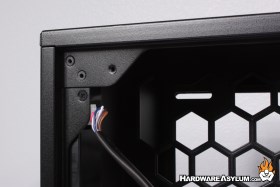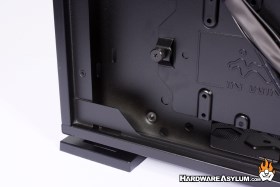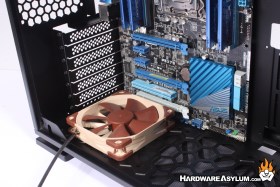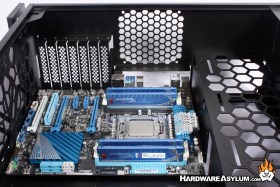InWin 303 Gaming Mid-Tower Case Review
Author: Dennis GarciaCase Construction and Installation
When cases are built the shell is often reinforced by all of the stuff inside. For instance “stacker” style cases where the whole front of the case is external 5.25” drive bays are generally quite strong due to the vertical brackets used to hold all of the drives. The same can be said for any case with a variety of internal panels since these can be used to increase lateral support. When you remove them, maybe to install a large watercooler, the outer shell can become weak and may need to have the corners reinforced so it doesn’t collapse under its own weight.
Given that the InWin 303 is virtually empty inside the designers have spent considerable effort to reinforce the corners for double rivets and are using the motherboard tray to provide lateral stability. That way they can create very strong corners like the one shown here and still have most of the other metal removed.
At the bottom of the case you will see the same corner detail with no rivet at the actual corner however the fastener shown is one of the main connections attaching the motherboard tray to the outer shell.
Of course the SECC steel helps along with the elaborate boxing and metal embossing which can go a long way to create strength while still reducing weight.

One of the details I find interesting is the hexagonal venting along the top edge of the back panel. The pattern is created using a stamping process that pushes the extra metal inside the case.
To give a sense of scale I have installed an ASUS X79 P9X79 motherboard. As expected the motherboard fits quite well but is visibly constrained on two sides that are normally open. At the top of the motherboard the PSU cover offers very little room to access the 8-pin CPU power connector and fan headers.
You will find a cable opening in the PSU cover that passes cables directly over the memory and 24-pin power connector and without any openings along the side of the motherboard you will have to get creative with cable routing.
Earlier I had mentioned how the last expansion slot is right at the bottom of the case. In the event that you want to install fans at the bottom of the InWin 303 you’ll have to carefully consider your motherboard and system requirements. MiniITX and MicroATX boards should work fine however full length boards will cause interference issues.





